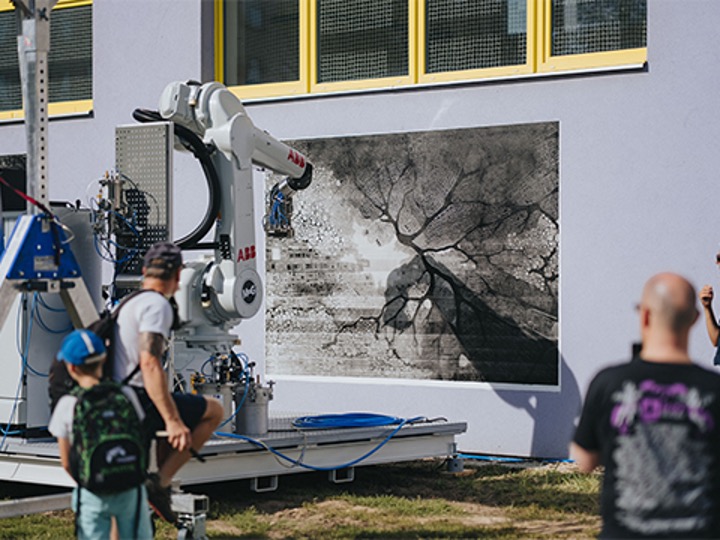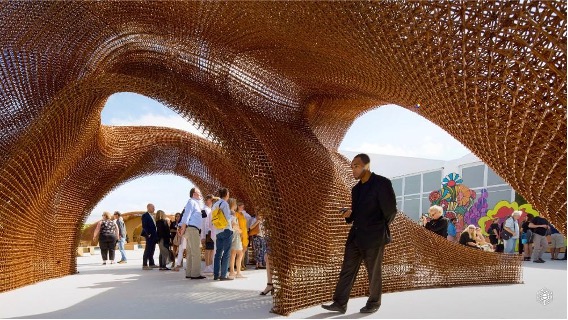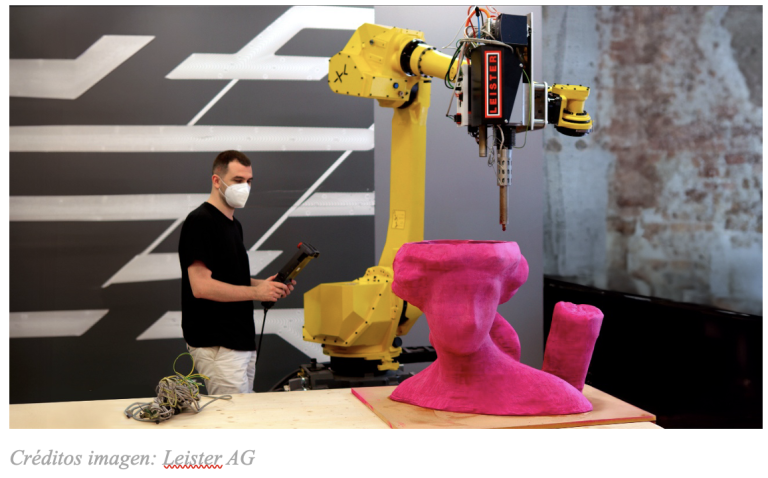Street art has always been a reflection of innovation, rebellion, and urban culture. Today, thanks to artificial intelligence and robotics, this discipline has found a new ally for reinvention. ABB, a global leader in automation technologies, recently unveiled a project in which an industrial robot becomes a muralist—bringing AI-generated designs to life on real walls in a process that fuses creativity and technology in unprecedented ways.
The system combines a generative AI algorithm, responsible for creating the original design, with an ABB robot that applies paint directly onto the surface. The result is not only a highly precise mural, but also a tangible demonstration that robotics can transcend industrial boundaries and integrate into cultural and artistic expression.
Urban Art in the Age of Automation
What sets this project apart is not just the technique, but the symbolism: AI proposes shapes and colors that a single human artist might never imagine, while the robot contributes the precision needed to execute them with millimetric accuracy. Together, they create a dialogue between the unpredictability of machine creativity and the repetitive perfection of industrial robotics.
ABB’s experiment redefines how we perceive both urban art and the potential applications of robotics. If robots were once seen solely as tools for welding, assembling, or transporting parts in a factory, they now emerge as mediators between digital imagination and physical reality.
The Robot Behind the Mural: ABB IRB 5500 with PixelPaint
In this artistic initiative, ABB deployed its IRB 5500 robot to paint a mural generated by artificial intelligence. Typically used in automotive painting applications, the robot was adapted to execute urban art with remarkable precision. What makes this intervention truly special is the painting technology it uses: PixelPaint, a system based on 1,000 individually controlled nozzles (similar to an inkjet printer), allowing complex patterns to be applied in a single pass—without the need for masking.
Thanks to PixelPaint, the robot doesn’t just paint simple lines or blocks; it reproduces gradients, fine details, and sophisticated visual effects directly onto the mural surface. This approach not only showcases the versatility of the IRB 5500 beyond its traditional environment, but also highlights how robotics can bridge the gap between industry and art, using cutting-edge technology for visual expression.
An Impact Beyond Murals
Although this is an artistic project, its impact reaches far beyond the art world. Companies across various sectors are beginning to see such initiatives as innovative tools for brand positioning and technological communication. The possibility of a robot painting murals in industrial facilities, innovation centers, or public spaces not only attracts media attention—it also projects a modern, creative image aligned with the digital revolution.
In this sense, murals created by AI and robots could become a strategic tool for corporate branding, transforming grey walls into symbols of innovation and the future.
The Future of Human–Machine Collaborative Art
More than a technological spectacle, ABB’s project opens the door to a deeper reflection: to what extent can creativity be shared between humans and machines? While artificial intelligence generates the patterns and the robot executes them with precision, the human touch remains present in the initial idea and the decision to bring it to life in an urban space.
In this synergy, art does not lose its essence—it is enriched with new possibilities, proving that culture and technology are not opposites, but complementary forces.



